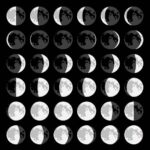David Hasselhoff’s Rise to Popularity in Europe
- David Hasselhoff became an unexpected music star in Europe after achieving worldwide television fame.
- His popularity skyrocketed in Austria with his ‘Night Rocker’ album, which initially flopped in the United States.
- He became known for his energetic performances and public appearances, akin to a folk hero for many Europeans.
- His music focused heavily on themes of freedom and escape, resonating with audiences during a time of geopolitical change.
The Symbolic Performance at the Berlin Wall
- Hasselhoff’s New Year’s Eve performance on the Berlin Wall in 1989 is a defining moment in his music career.
- His rendition of ‘Looking for Freedom’ became intertwined with the themes of hope and unity during the fall of the Berlin Wall.
- That night, Hasselhoff was elevated from a pop and TV star to being viewed as a cultural ambassador.
- An image of this performance is displayed at Checkpoint Charlie Museum in Berlin, signifying its historical importance.
Continued Success in the European Music Scene
- Hasselhoff has maintained a loyal fan base in Germany, Austria, and Switzerland, where he frequently tours.
-
Despite limited recognition in the U.S., his albums often achieve multi-platinum status in Europe.
Despite his modest recognition as a musician in the United States, David Hasselhoff’s music has garnered a remarkable following in Europe, leading many of his albums to achieve multi-platinum status across the continent. This phenomenon reflects not only the regional divergence in musical taste but also Hasselhoff’s ability to cater to the European audience’s preferences, notably through the Schlager genre—a traditional, sentimental pop sound that resonates deeply with Germany, Austria, and Switzerland. His chart-topping success in these countries highlights his global reach, proving that music transcends geographical and cultural boundaries.
- His music career is defined by his ability to connect directly with audiences, reminiscent of traditional showmanship.
Musical Style and Appeal
- His musical style includes elements of pop and rock, frequently labeled under the Schlager genre in Europe.
- The theatricality of his performances appeals to a sense of nostalgia, especially among older fans.
- His stage presence often combines narrative storytelling with upbeat music, creating memorable concert experiences.
Cultural Impact and Legacy
- David Hasselhoff’s music career serves as an example of regional celebrity, emphasizing differing cultural receptions.
- His music is seen as both a relic of a past era and a continuing cultural symbol in Europe.
- Hasselhoff remains a case study in celebrity cross-cultural identity, with lingering impacts on music and media studies.
♠
Found a bug? Have some other thoughts on this tool? Let me know here →






